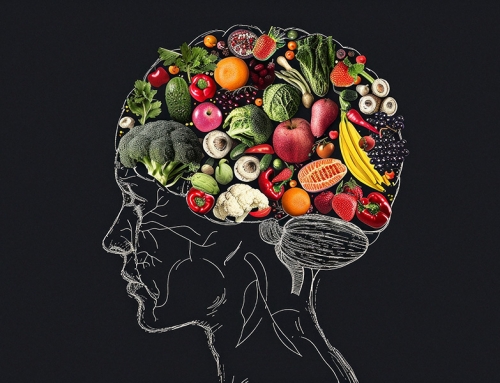Introduction
In recent years, the swift advancement of virtual reality has resulted in its integration into various professional as well as educational sectors. Notably, it holds significant significance in medical contexts, where it facilitates therapy, rehabilitation, and functions as an educational tool through the creation of virtual environments. (1)
What is Virtual Reality?
Virtual reality is a concept that describes a computer-generated imitation of a setting where individuals can navigate and engage with digital space, occurrences, items, and simulated individuals (avatars). Typically presented in three dimensions, this simulated environment often mirrors the actual world in terms of its visual appearance and the physical events taking place within it. (1)
Use of Virtual Reality in Nutrition Education & Behavior Modification
In recent times, virtual reality (VR) has made its way into diverse medical domains, offering an interactive computer-generated setting. VR replicates the user’s physical presence in a computer-generated world and facilitates their interaction within this environment. The application of VR in medicine presents substantial opportunities, supported by clinical research and experienced medical practitioners. One such application involves using VR as a training tool, enabling healthcare professionals to enhance their expertise through practical learning experiences. The notable advantage of such solutions lies in their capacity to incorporate even exceptionally rare clinical scenarios, without any actual consequences for erroneous decisions and actions. (1)
In a test, the way the environment was shown, whether it looked natural or made by people, affected how much people cared about the environment. When the setting looked natural, people felt closer to nature and cared more about the environment than when it looked like a city in a computer. Also, the way people act is influenced by how the message about the environment is shown to them. When they saw things that made them think they could help, they were more likely to want to save paper than when they saw things that made them feel like they couldn’t. Other tests showed that when people were told how their actions affected the environment, they wanted to act in ways that helped the environment more. (2)
Benefit of Virtual Reality in Nutrition Education & Behavior Modification
Advantage of utilizing virtual reality simulation with avatars is its contribution to addressing the need for clinical placement sites. It also facilitates the introduction of novel experiential environments that might be challenging to access physically, promoting a fresh approach to education. Within the realm of postsecondary healthcare, simulation serves as a valuable educational tool, alleviating the strain on limited clinical sites and preceptors. Additionally, virtual reality simulation enhances trainees’ confidence by providing a secure environment for skill practice, thereby imparting more comprehensive training and strengthening the credentialing and preceptor process. Incorporating virtual environments, including 3D immersion, diverse perspectives, and multi-sensory cues, offers several potential advantages for dietetics education and training, such as hands-on and dynamic learning, visualization, exposure to contexts that are impractical or difficult to encounter in real life, heightened motivation, fostering collaboration, and fostering adaptability. (3)
Drawbacks of Virtual Reality
The drawbacks associated with virtual reality predominantly revolve around expenses, the learning curve associated with mastering the hardware and software, potential health risks, and the challenge of integrating new technology into a course or curriculum due to possible resistance. Similar to the introduction of any new technology, these concerns might diminish over time as virtual reality becomes more prevalent in fields beyond education. (4)
Conclusion
Using virtual reality (VR) in nutrition education and behavior change can really improve how we learn and train. This means we can make learning more exciting and practical, even when there aren’t enough places to learn in real life. VR can copy what happens in real life and help us practice new skills. It also helps us feel more confident. Even though it might cost a bit and be hard to learn at first, using VR for nutrition education and behavior change is important. It can help us understand our health better and might change the way we learn and get better at taking care of ourselves. (1,2,4)
References
- Kamińska, Dorota., Zwoliński, Grzegorz., Laska-Leśniewicz, Anna & Coelho, Luis. (2022). Virtual Reality in Healthcare: A Survey. 10.4018/978-1-7998-8371-5.ch001.
- Wienrich C, Döllinger N and Hein R (2021) Behavioral Framework of Immersive Technologies (BehaveFIT): How and Why Virtual Reality can Support Behavioral Change Processes. Front. Virtual Real. 2:627194. doi: 10.3389/frvir.2021.627194
- Davis, A. (2015). Virtual reality simulation: an innovative teaching tool for dietetics experiential education. The Open Nutrition Journal, 9(1).
- Pantelidis, V. S. Reasons to Use Virtual Reality in Education and Training Courses and a Model to Determine When to Use Virtual Reality.






Leave A Comment